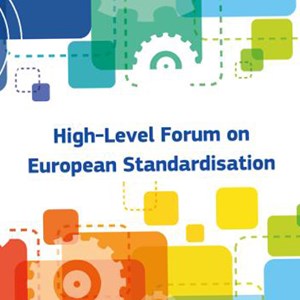NEWS

The Institute for Standardization of Serbia (ISS) held a well-attended promotional seminar, "Artificial Intelligence (AI) – Standards, European Regulations, Legislation and Challenges in Practice," on 11 February 2025. Over 50 participants explored fundamental AI terminology, concepts, risks, and organizational management strategies. The training also covered key AI standards, including SRPS ISO/IEC 22989:2023, ISO/IEC 42001:2024, SRPS ISO/IEC 23894:2023, SRPS ISO/IEC 38507:2023, and ISO/IEC FDIS 42005.

As pioneers, the RISE Research Institute of Sweden was recently accredited to certify according to the European Design for All standard. Essity’s global brand Tork is the world’s first ever organization to receive an independent assessment of how well their products and services adapt to users’ varying functional abilities.

At the 2nd Autumn School, held on November 13 and 14, 2024, SIST selected two new ambassadors of standardization from among 60 participants. Eva Pevec from the Faculty of Economics and Aleksander Velkavrh from the Faculty of Electrical Engineering have joined Hana and Erik, expanding the SIST family of young ambassadors to now include four members.

Austrian Standards is taking a pioneering role and is the first standardization organization in Europe to offer objective evidence in the form of certification for people who can support AI projects in the spirit of digital humanism. The first globally available standard for ethical system design ISO/IEC/IEEE 24748-7000 forms the basis for this, in combination with elements of the management standard ISO/IEC 42001 on AI. Responsible handling of AI and digital data requires predetermined framework conditions, including reliable standards.

CEN and CENELEC, two of the officially recognized European Standardization Organizations, welcome the European Commission's recently issued Competitiveness Compass. This strategic initiative is a positive and bold first step towards reinforcing the EU's ability to lead in the world economy and advance the twin green and digital transitions.

European Standardization Organizations CEN, CENELEC and ETSI, together with ENISA, the EU Agency for Cybersecurity, are pleased to announce that registrations for the 9th Cybersecurity Standardization Conference are now open. The event will take place on 20 March 2025, in Brussels and online.

A new CEN Workshop is being established to expand on the innovative deliverables of the CHRONICLE research project. The project’s vision is to improve building performance in terms of energy efficiency, comfort, and well-being through the digitalization of building information.

A new CEN Workshop is being established to build upon the innovative outcomes of the R&I project RobétArmé, funded under the Horizon Europe programme. Targeting a step-change in Construction 4.0., the RoBétArmé architecture follows the three shotcrete application phases (inspection and metal printing, construction repair and surface finishing) aiming at automatizing particularly laborious construction tasks of shotcrete application through a highly digitalized robotics solution, which is robust and versatile enough to perform autonomous shotcreting in diverse construction environments e.g. tunnels, buildings, bridges, retaining walls, etc.

The European Commission still continues to publish new reports from the High-Level Forum on European Standardization’s workstreams. The new reports include recommendations on standardization in different fields and how they can support the relevant sectors across Europe.

Screwed and bolted joints are often used to assemble safety-critical components on rail vehicles. The function of a bolted joint is to connect two or more parts in a sufficient and safe manner over the intended service life under the conditions of the railway environment. Bolted joints have huge implications for the safety of railway equipment: on the mechanical level, they are designed to transmit forces between the connected components without failure, separation or relative movement. On the electrical level, they are designed to ensure current transmission between electrical conductors safely and without separation or relative movement.